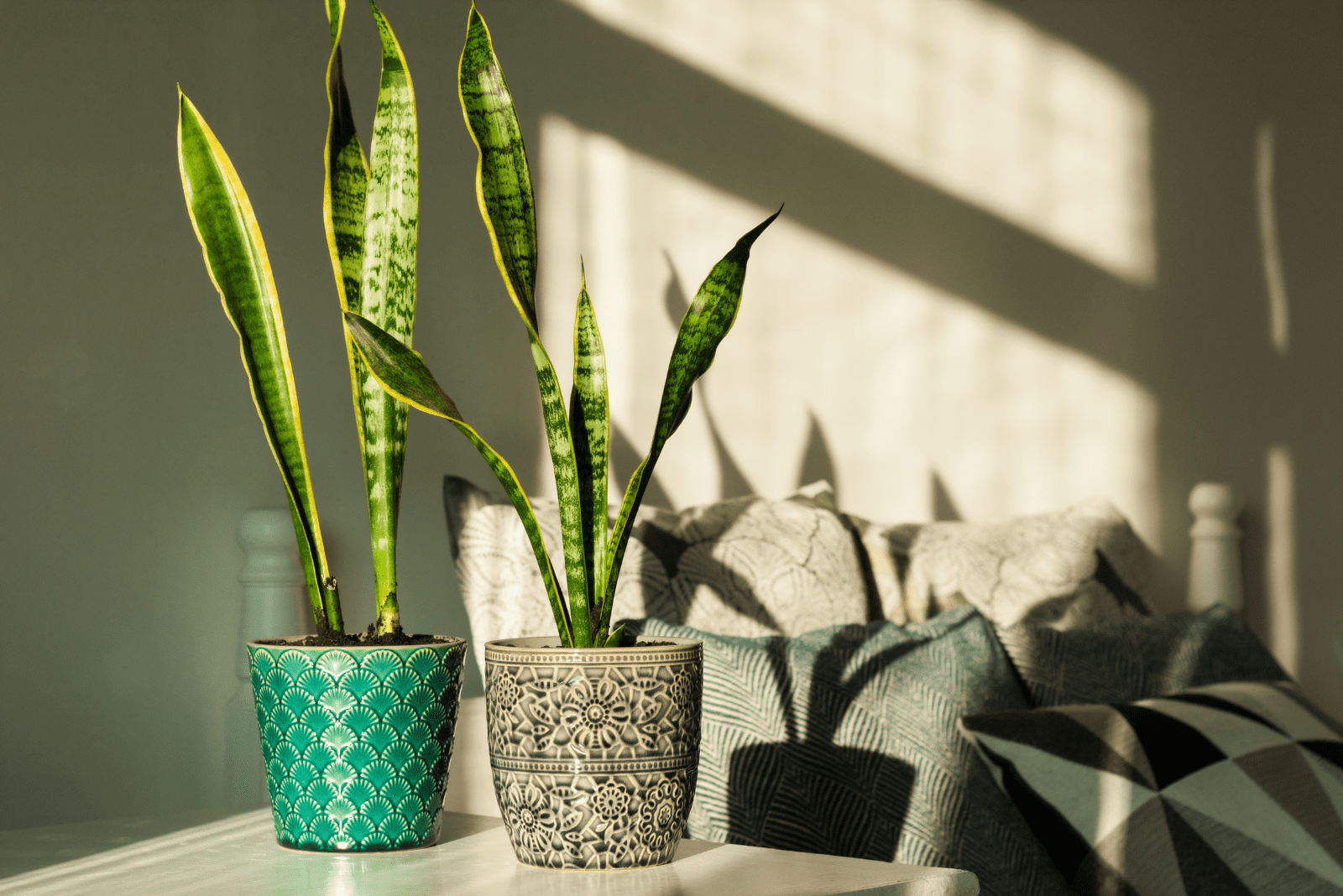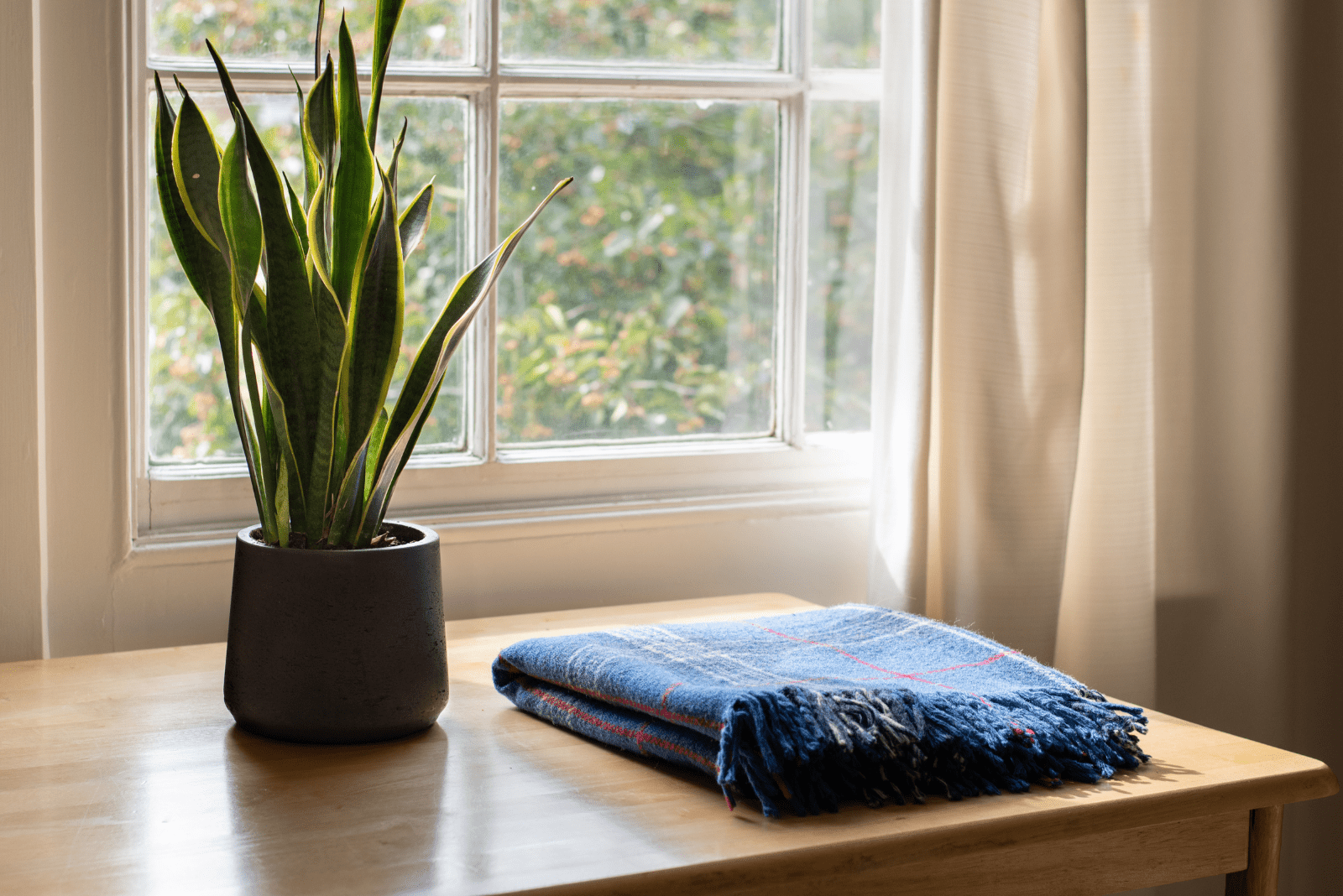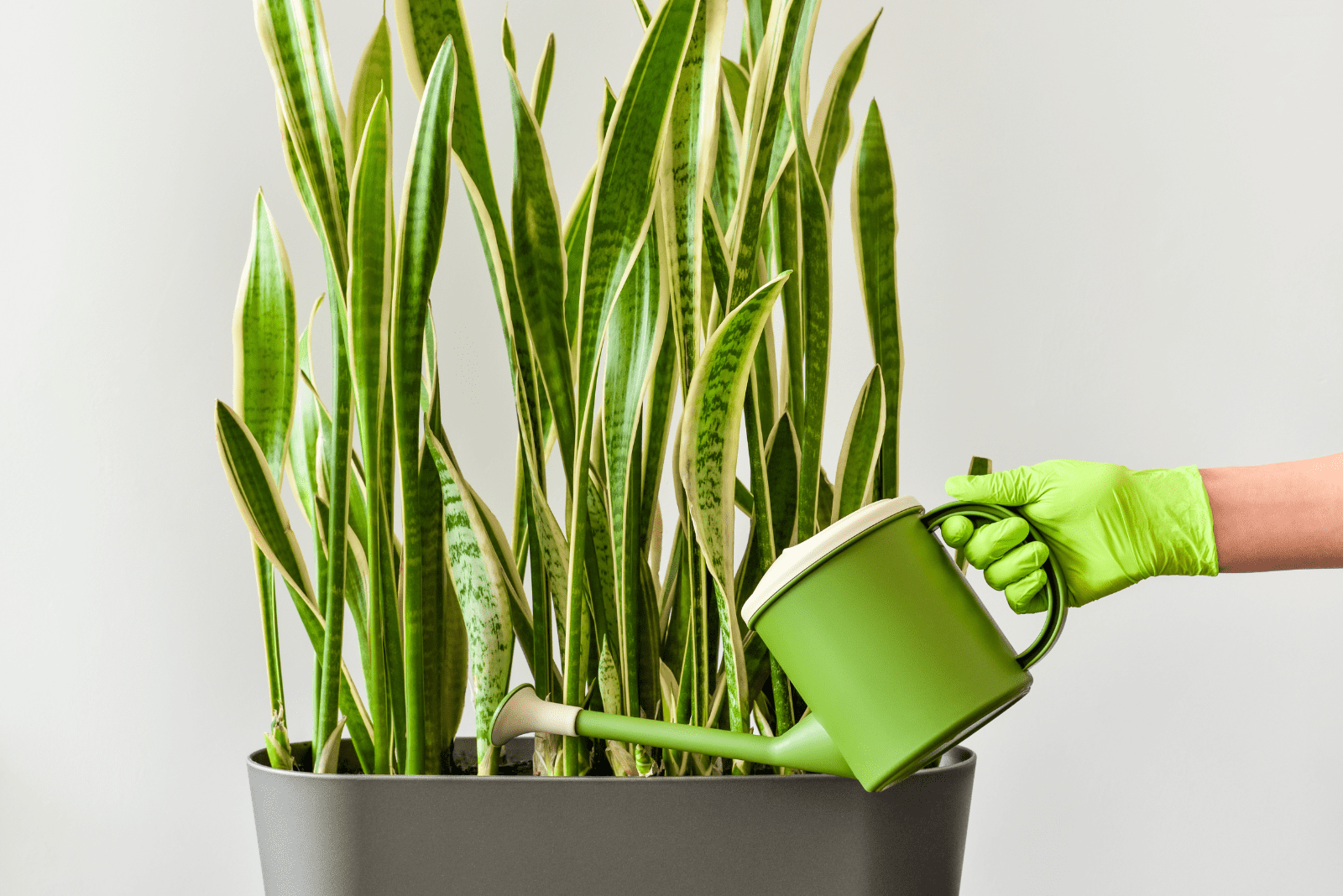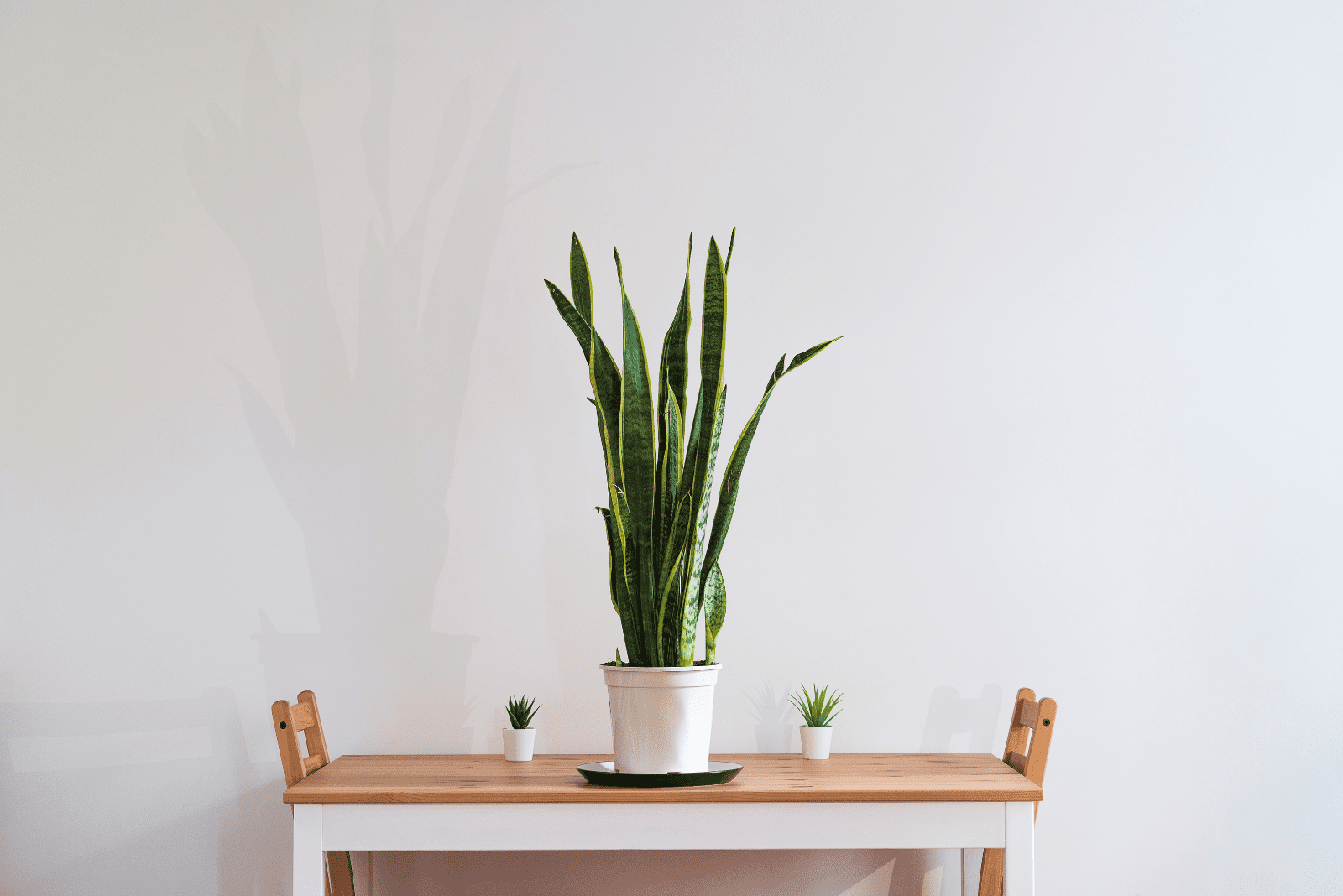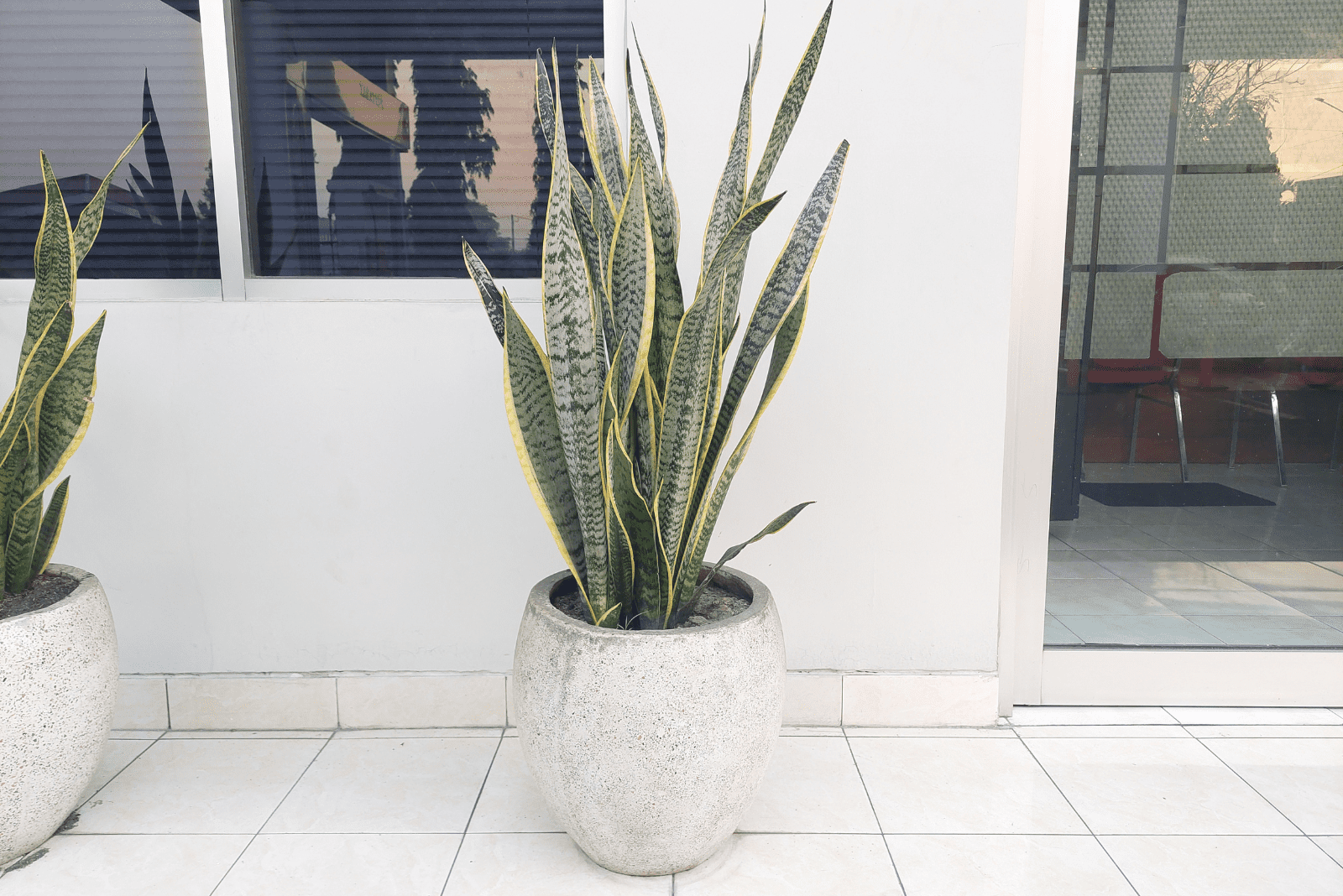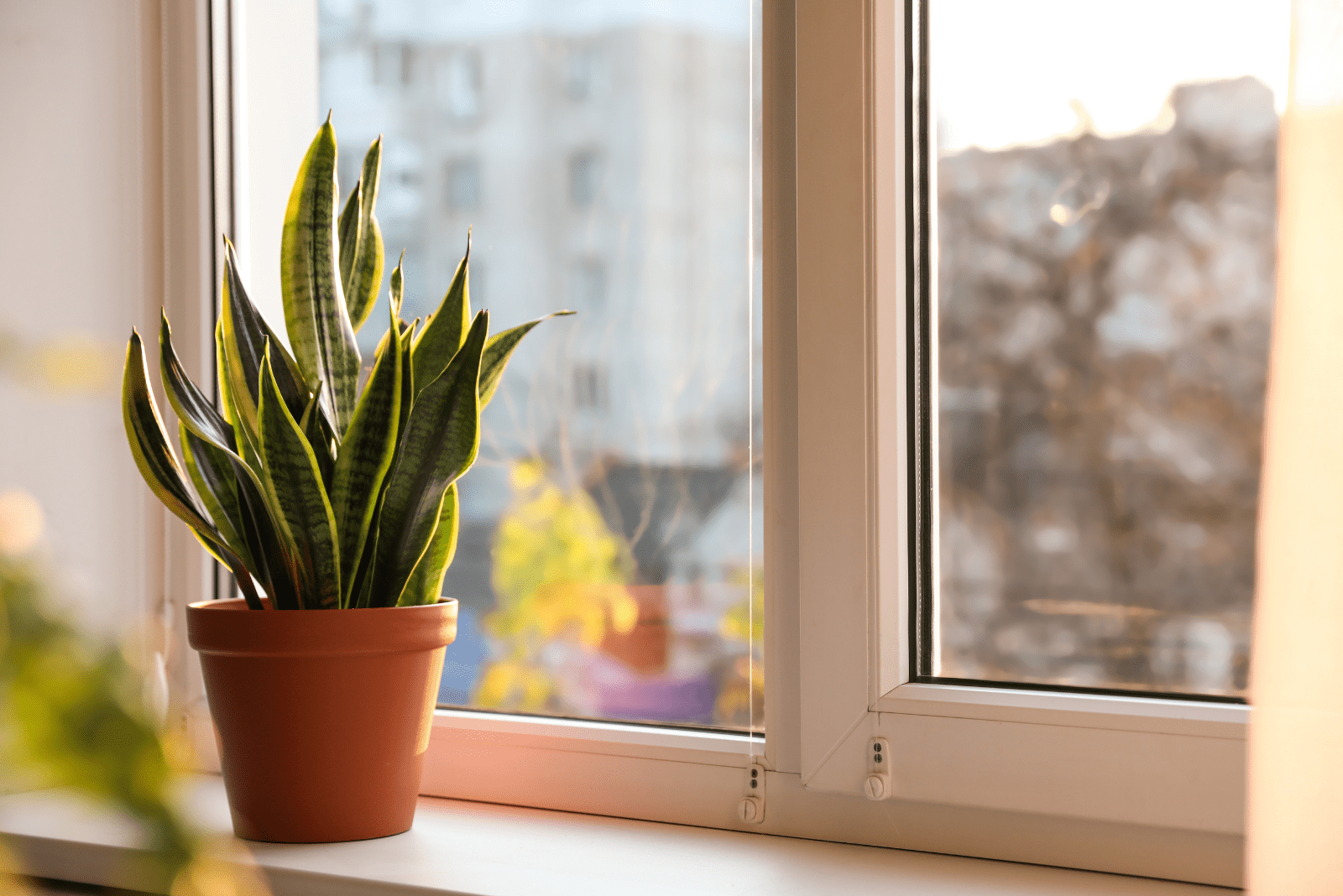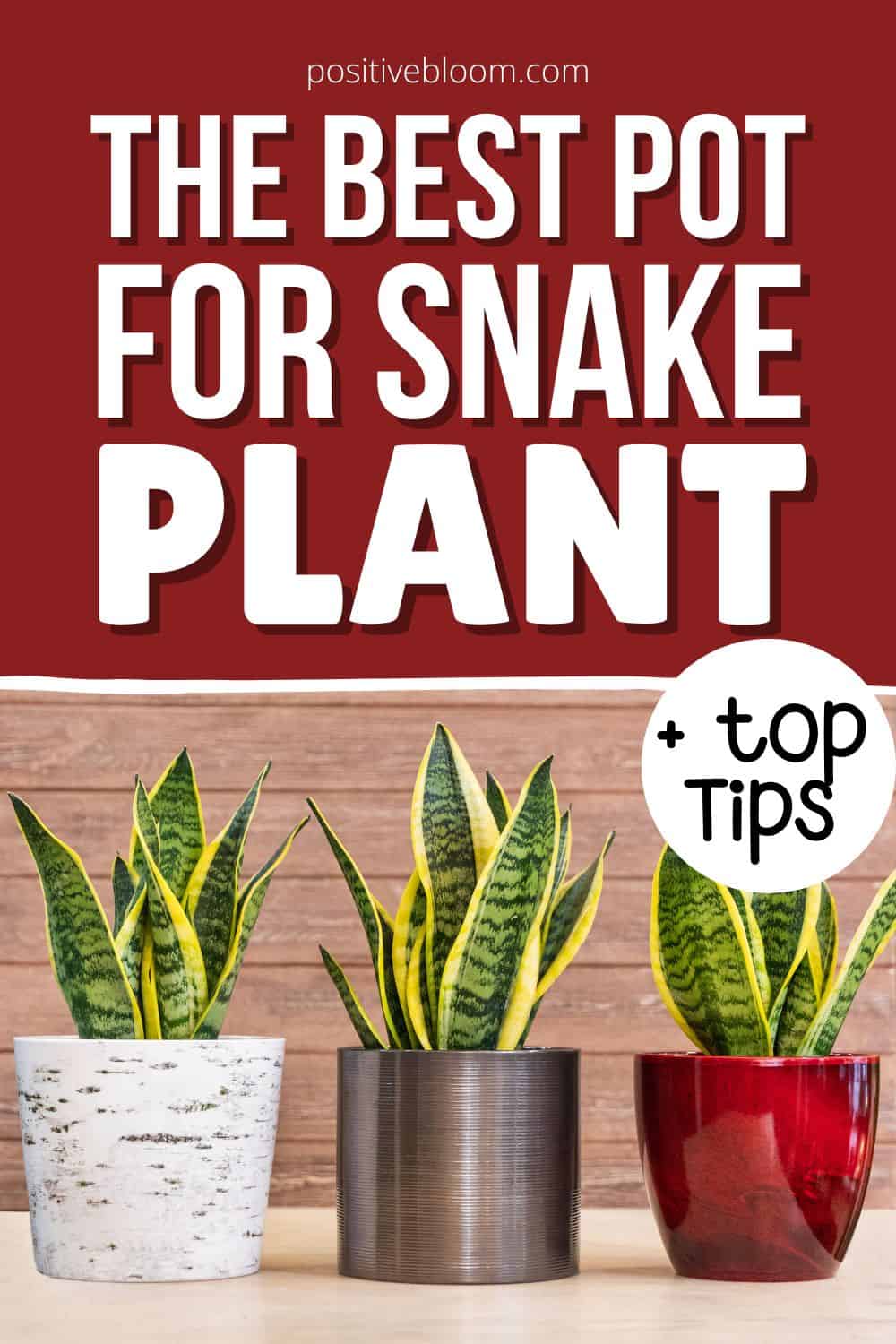Buying a new pot for your plant can be exciting and exhausting at the same time. You want to buy a breathtaking pot that will look perfect in your home, but you also have to consider that pots are like homes for your plants, and you want them to be as comfortable as possible.
There are a few things that you need to take into account when choosing the best pot for snake plant because even though these succulents aren’t needy, you will still have to provide them with proper drainage (pots with drainage holes are the key.).
Humidity and temperature also affect the health of this houseplant, which is why pot material and pot size are important. This means that you have to buy the type of pot that suits the needs of your Snake plant best.
Keep reading to find loads of tips and tricks that will help you pick the best pot for snake plant!
How To Choose The Best Pot For Snake Plant
Functionality must come before aesthetics. I’m sure you don’t want to spend money on a pretty pot that won’t work for your Snake plant (also known as Sansevieria Trifasciata and Mother-in law’s tongue).
Sure, that purple cachepot might be perfect for your Purple Spider plant, but it could also end up being the reason why your Spider plant is dying (because it doesn’t have drainage holes to get rid of excess water).
There are several factors you have to take into consideration:
• Pot size
• Size of different varieties of snake plant
• Watering habits
• Drainage
• Pot material
• Temperature and humidity
• Location
1. Pot Size
When selecting a pot for your Snake plant, one of the most crucial factors is pot size. Each plant is in a different stage of development, so it might be challenging to determine the ideal size pot for your little Snake.
There are also varieties of Snake plants that grow differently — some are dwarfs while others are significantly larger, but more on that later!
If you are about to buy a pot for your new indoor plant, make sure to choose one that is 4 inches wide and deep so that the Snake plant’s roots can easily fit.
Generally speaking, Snake plants need pots that are 1/3 bigger than their roots to provide enough space for your beloved plant to grow and develop healthily.
If you are considering buying deep pots, please note that the soil will take up too much space and need larger amounts of water to stay moist, which can easily lead to overwatering and root rot.
Pots that are too small simply won’t provide your plant with enough space, so the roots will be crowded and rootbound, which usually leads to stunted plant growth. This is especially important because these plants are slow-growing, so you might not notice that you need to repot Snake plant.
Signs That Your Snake Plant Needs Repotting
There are a few signs that will tell you that your snake plant needs to be repotted. For instance, your Snake plant might not be growing because it’s rootbound, which is usually caused by growing in a small pot.
Here are some signs that your snake plant needs repotting:
• Roots coming out of the holes in the bottom of the pot
• Soil dries out too quickly
• Stunted growth
• Pest infestation
These are the most common reasons you will need to repot your Snake plant, though you may have also found a new pot that fits your home decor better and want to repot your plant in it.
Sometimes growers leave their Snake plant root bound because they don’t want it to grow anymore, but I always repot to encourage new leaf production!
The plant will only grow during the growing season, so keep that in mind. It usually produces 4 leaves per growing season. Therefore, the Snake plant should be repotted in late winter or early spring to give it the best chance to grow and develop after dormancy.
It is necessary to repot the plant into a slightly larger container. I know it would be simpler to buy a much larger pot and let the plant grow in it, but this will likely result in overwatering because the extra soil would demand more watering than the plant requires.
To successfully repot your plant, moisten the soil the day before to make the operation much simpler, and then transfer it into a new pot with new potting soil. Remove any mushy or brown roots that you find because they may have been affected by root rot.
In a brand new pot, the plant’s root ball will have enough space to spread and absorb all the nutrients it needs.
By separating the rhizomes and propagating them, you can also grow a new plant from scratch. Leaf cuttings can also be used for plant propagation, and we’ll discuss that more later on.
2. Sizes Of The Different Varieties Of Snake plant
There are about 70 different Snake plant species, and even though they are all somewhat similar, some varieties vary greatly.
For instance, the dwarf varieties. They only grow up to 10 inches high, while other Snake plant varieties can reach almost 4 feet tall!
They will definitely need different pots for growth and development!
Dwarf varieties will definitely need smaller pots because these types of plants have smaller roots and will also need shallow pots compared to the larger varieties, which need pots deep enough to make the plant comfortable.
Some of the dwarf varieties include:
• Pavra
• Trifasciata Hahnii
• Pinguicula
• Trifasciata Twisted Sister
• Kirkii Silver Blue
• S. laurentii
Plant enthusiasts often choose to grow dwarf varieties as they can easily be placed on shelves and window sills, and with their little spiky leaves, they can make any room look more lively!
Some of the large varieties include:
• Cylindrica
• Ehrenbergii
• Trifasciata prain
• Bacularis
• Masoniana
Even though these are significantly larger plants, they will also make a great addition to any room, especially the living room, which are usually larger. Another great thing about these plants is that they can grow perfectly well in low light conditions, which is why they are perfect plants for offices with no windows.
3. Watering Habits
One of the most unlikely things in the Snake plant care guide is their watering needs — they don’t need to be watered that often, and you also need to let the soil completely dry out before watering them again.
That being said, these plants can easily be overwatered.
A factor that contributes to water retention in the soil is the pot, specifically the potting material. Pots are generally divided into porous and non-porous pots.
As there are usually two types of plant growers (those that tend to overwater their plants and those that sometimes forget a few watering sessions), this feature comes in handy and helps them with their habits.
Porous Pots
Porous containers are ideal for avoiding overwatering. There won’t be any additional moisture retention because of the numerous tiny holes in them that allow air and water to pass through. Typically, these come in the form of concrete, terracotta, or clay pots.
They are available in a wide variety of colors and shapes.
The majority of them are affordable, simple to find, and feature drainage holes in the bottom of the pot.
You won’t be able to see your plant’s roots in these sorts of pots, however. They may also leave a stain if water seeps through them because they are not waterproof either. Nonetheless, they are perfect for gardeners who tend to overwater their plants.
Non-porous Pots
Non-porous pots are made of water-resistant materials and impermeable to both air and water. They can be wooden, metal, fiberglass, stone, and ceramic pots with glazes.
These containers are fantastic because they effectively retain moisture, which is great if you occasionally forget to water your plants.
There are also gorgeous non-porous pots with drainage holes that are excellent for ornamental use. They are also difficult to break, which is ideal if you have children and animals running around the house.
However, these containers make it difficult to see the roots clearly. Additionally, wooden pots sometimes rot and metal ones occasionally rust, so choose wisely!
4. Drainage
When selecting a suitable pot for your Snake houseplant, good drainage is of the utmost importance. Drainage holes are crucial for draining surplus water from the soil. Your Snake plant may start to rot if the soil is excessively wet for an extended period of time.
It’s always sad when the most attractive pots don’t have drainage holes. Isn’t that just typical?
However, if a pot doesn’t have drainage holes you can always drill holes in it (pots without holes are called cachepots).
Placing your plants in a tiny plastic pot before putting them in cachepots is another option if you want to use cachepots for your Snake plants.
Remember that drainage holes in your plant pot are a necessity.
5. Pot Material
Terracotta, concrete, plastic, and metal are the most typical materials used to make pots for Snake plants. There’s not much to choose between them, so it’s down to your personal preferences really.
Due to its versatility in terms of decorative shapes and colors, terracotta is arguably the best material for porous pots. Not only are they good for watering requirements, but terracotta pots are also great for ornamental purposes as they come in various patterns and shapes.
Because they are lightweight, inexpensive, and readily inserted into whatever style of pot you like, including clay, terracotta, or cachepots, plastic cups are probably the most convenient choice. However, they might not be ideal for a Snake plant because they are made out of non-porous material that prevents water evaporation.
In case you want to use plastic cups, make sure that they have drainage holes in the bottom, otherwise your Snake plant will likely rot.
Ceramic or glazed pots are definitely the most decorative — they come in various shapes and sizes, and are perfect for smaller varieties. What’s also great is that they are pretty heavy, which means that top-heavy plants are unlikely to tip over.
However, they are also less porous compared to the terracotta pots, which means that you will have to be extra careful with watering. Ceramic pots are also relatively heavy, so it could be hard to move them around.
The most unique looking pots are probably concrete pots, which are definitely ideal for outdoor plants as they are unaffected by weather changes. They are also extremely heavy, and the level of porosity depends on the type of concrete.
6. Temperature & Humidity
Temperature is an important factor when choosing the best pot for Snake plant as it greatly affects the water requirements.
For instance, if you put your plant in a warm, dry environment with little humidity, it will dry out rapidly and need to be watered more frequently. On the other hand, if the humidity is high your plant won’t require as much water because it can take moisture from the air.
You won’t need to water your plant as frequently if the temperature is low because the soil will take longer to dry out.
Depending on the temperature you plan to keep your plant in, you must decide between non-porous and porous pots.
However, in both situations you must select a pot with drainage holes and potting soil that drains properly.
When it comes to humidity and pot material, terracotta and ceramics pots should be used if you are growing your plants in a humid environment as they will allow the soil to absorb moisture from the air.
On the contrary, if you are growing your Snake plant in low humidity and high temperatures, then you should use plastic pots as they’re great for water retention.
7. Location
Although snake plants are typically grown as indoor plants, some gardeners enjoy creating little jungles out of these tropical delights from the deepest rainforest.
When this plant is cultivated outside, you have less control over it because the weather and climate have an impact on its development and needs. For instance, you might require a pot with additional drainage holes in the bottom if you are in an area with frequent and severe rainstorms.
To help with drainage during periods of intense rain, you might also want to think about adding perlite to the potting soil. In this situation, cachepots must be avoided in favor of a porous type of pot.
To help maintain high soil moisture levels, grow your Snake plant in a non-porous container if your area has a warm, sunny climate. Plant it in a plastic or terracotta container and give it plenty of water.
Put your plant in a sturdy, weather-resistant container if you live in a windy place because others, like plastic ones, can easily be blown away. Although you can fill the bottom with rocks, it’s always best to bring your plant indoors when the weather is bad.
Please note that Snake plants can grow in USDA hardiness zones 9 to 11. If you were wondering whether direct sunlight will damage your little Snake plant, you don’t have to worry because plants like Sansevieria can thrive in direct and indirect sunlight, as well as in low light conditions.
Snake Plant Care Guide
We have already discussed some details about the Snake plant care guide, however, there is plenty more to learn when it comes to making your plant happy and healthy!
Generally speaking, snake plants are low-maintenance plants on which you won’t have to spend too much time, energy, or money.
If you are in a hurry, the table below will provide you with the necessary information regarding plant care:
[table id=298 /]
Let’s find out more!
1. Soil Requirements
A pH range of 5.5 to 7.0 is ideal for the development of Snake plants. To make the potting mix more fertile and draining, you can add perlite and loam soil compost.
Despite the fact that this houseplant needs moist soil, avoid overwatering it to prevent root rot. Pots with drainage holes can help you with this because they allow extra water to drain out.
2. Watering Requirements
Snake plants prefer potting soil that is both moist and well-draining, but be careful when watering because moist soil differs from wet soil.
Let the soil dry fully between waterings, but always make sure to water it at least once a week. You’ll need to water this plant more regularly if you’re growing it in direct sunlight or in a bright area.
3. Light Requirements
For a snake plant to flourish, it needs bright indirect light. Although it won’t perish in low light or shade, its growth will be limited and its variegations will be less apparent.
Although it can handle some sunshine, it’s recommended to keep this plant out of direct sunlight for too long to avoid damage to the lovely sword-like leaves.
4. Fertilizing Requirements
Because its tubers store enough nutrients to see it through tough times, the snake plant doesn’t require much fertilizer. In addition to causing fertilizer burn, too much fertilizer might also prevent your plant from producing the beautiful plantlets required for propagation.
You can fertilize it once a month with a light liquid fertilizer during the growing season. Feeding this plant during its fall and winter dormant phase would only lead to overfertilization, which has no beneficial effects.
5. Temperature Requirements
Maintaining your plants’ health is incredibly important, especially if they are sensitive to unexpected temperature changes.
Unfavorable temperatures can result in a variety of problems, including slowed development or even death.
As a result, it’s crucial to keep your Sansevieria plants between 65 and 85 degrees Fahrenheit. This can vary slightly, especially in the summer and winter.
They can survive in temperatures as low as 45 degrees Fahrenheit in the winter and as high as roughly 100 degrees Fahrenheit in the summer.
6. Pruning Requirements
It is recommended that you prune your plant to maintain a good shape and promote new growth and development.
Due to the fact that your plant is dormant throughout the winter, pruning should only be done during the growing season.
Cut the leaves at the plant’s base with sterile shears or pruners. Make sure they are sharp to prevent damaging your plant.
Even though root pruning is something you can only do occasionally, this plant adores it. The snake plant has an extensive and fibrous root system that will penetrate the pot if you don’t repot it often enough. Once you’re done, you can trim the plant’s roots and repot it in fresh soil and a new container.
7. Propagation
The best way to practice propagation for aspiring gardeners is with a snake plant!
Leaf cuttings or cutting the rhizomes apart are the two methods used for propagating this plant.
You can also grow it in water or soil!
Water Propagation
Take a 6-inch (15 cm) long cutting from the healthiest leaf you can find.
The cutting must then be placed in a glass container with 3 inches (7.5 cm) of water. A sunny location is best, and don’t forget to change the water at least once a week!
The snake plant doesn’t grow quickly, so this procedure takes some time, however, after two months you should start to notice transparent roots. Plant your green snake into a medium that drains properly once it has grown a little bit.
Soil Propagation
The only difference between propagating leaf cuttings in soil and water is that you must place the cuttings in soil instead of water.
Before putting the leaf-cutting into the soil, you should also give it a quick dip in a rooting hormone. Put the pot in a sunny area, water the substrate, and keep it moist.
Within two months, the plant’s root system should begin to form. If you notice that your new plant pot is now too small for it, you can repot it in a larger container.
8. Common Problems
The major issues that affect Snake plants are leaves browning and splitting, as well as pest infestation.
Even though the snake plant is tolerant to various temperatures, it doesn’t exactly thrive in temperatures lower than 41 degrees Fahrenheit, which is why they usually suffer from winter damage.
The consequences of this are wrinkly leaves, leaves splitting, leaf tips turning brown, and eventually the whole leaf turning black. This plant is all about leaves (just like Aloe), and we don’t want anything bad happening to them!
Another Snake plant disadvantage is its susceptibility to pests and diseases. The most frequent pests that infest this plant are spider mites, aphids, mealybugs, whiteflies, and scales. Make sure your snake plants receive enough water and vital nutrients because healthy plants are less prone to becoming infested.
Mealybugs are one of the pests that can be hand-picked. However, you should never use a treatment unless it kills the pests and regenerates your plant at the same time.
Use neem oil or rubbing alcohol on the leaves if you want to go organic. A solution of water and rubbing alcohol can be sprayed on the pest-infested region.
To avoid mealybugs, use a balanced fertilizer. Alternatively, you can use insecticides to get rid of these pests.
Frequently Asked Questions
1. What kind of potting soil should I use for my Snake Plant?
The potting soil to use for a Snake plant should be well-draining, with pH levels ranging from 5.5 to 7. In order to increase fertility and provide the mixture with much-needed nutrients, you should combine your favorite potting soil in a 1:1 ratio with the cactus mix. Compost is a crucial component as it helps with drainage.
2. Do Snake plants need pots with drainage holes?
Pots with drainage holes are a must if you are planning to grow Snake plants in your home or garden. Drainage holes in the bottom of the pot help to drain the excess water that would otherwise be harmful to plants because they don’t like to sit in soggy soil!
Overwatering can easily lead to root rot, which can completely destroy your plant.
If you have found a beautiful pot that doesn’t have drainage holes, but would fit perfectly in your home decor, then you can always take the matter into your own hands and drill some holes in the bottom.
3. Can I plant a Snake plant in a ceramic pot?
Yes, you can plant your little Snake plant in a ceramic pot, just make sure that you water it properly. Ceramic pots are not porous, like terracotta pots, and the water won’t evaporate as quickly, which means that there will be some water retention so you should be extra careful when watering.
These pots are also heavy, and it would be unlikely for your Snake plants to tip over if you are growing them in ceramic pots. In addition to this, ceramic pots come in different shapes and sizes, and they are probably the most decorative pots of all!
To Sum Up
Snake plants are truly one of the best plants that you can keep in your house — not only are their spiky leaves going to make your room look more lively, but you can also plant them in decorative pots to make them look even prettier!
These plants are low-maintenance and hardy, so I doubt that you would have much trouble finding the perfect pot. All you have to consider is the material and size — you don’t want your plant to become overwatered because you planted it in a pot that is too big.
Squeezing roots in a pot that is too small is not a good thing either.
It doesn’t take much to find the best pot snake plant, but you should still be thorough and careful because it will be your plant’s home for the next couple of years, and I’m sure that you want it to be comfortable!
I hope this article was helpful. 🙂
Until next time!
Like this post? Share or pin it for later!

